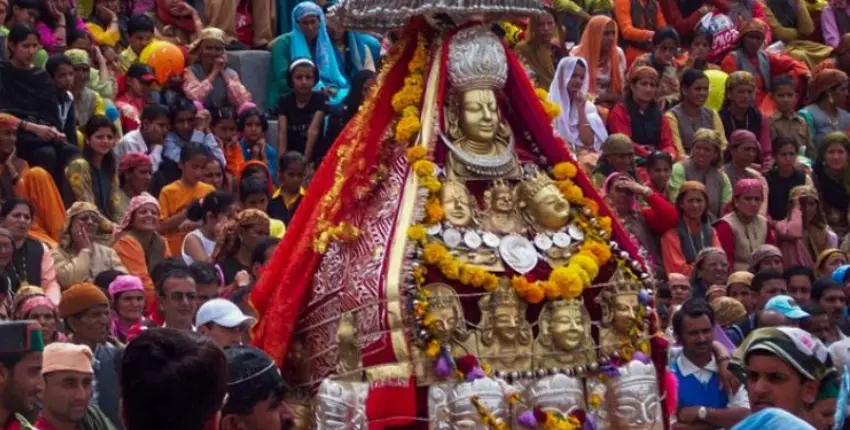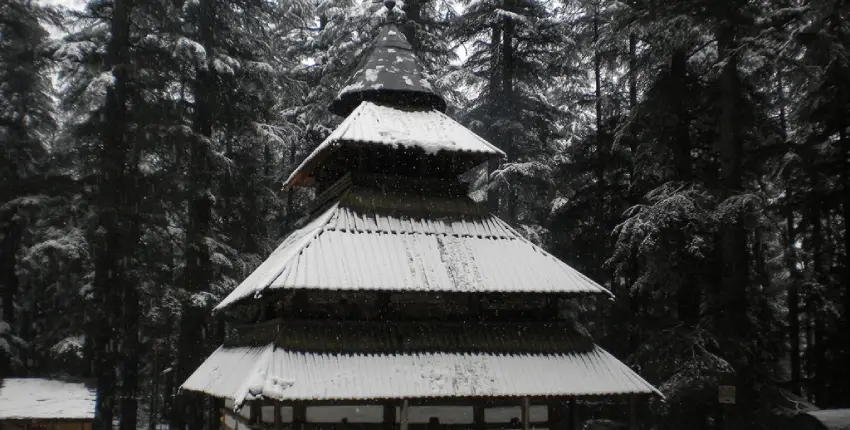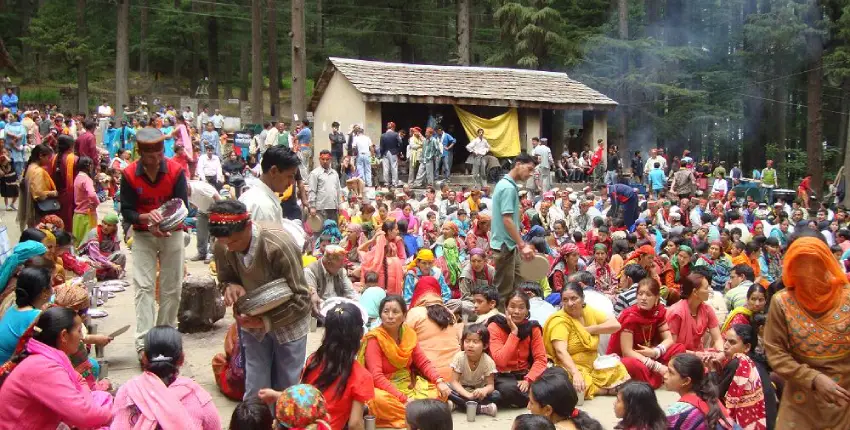
The Hadimba Temple, a captivating and revered site in the picturesque town of Manali, beckons visitors with its rich history and enchanting legends. Nestled amidst a serene cedar forest, this iconic temple is a testament to Himachali architectural finesse, featuring intricate wooden carvings and a distinctive pagoda-style roof. Devotees and tourists alike are drawn to the temple to pay homage to Hidimba Devi, a character from the Mahabharata who once meditated in the very cave upon which the temple was built.
Hadimba Temple: Historical Significance

The Hadimba Temple in Manali is more than just a place of worship; it’s a living testament to the region’s rich history and cultural heritage. Dating back to ancient times, this temple has witnessed the passage of centuries, standing as a symbol of Himachali tradition. Over the years, it has evolved while retaining its unique architectural charm and spiritual significance. Exploring the temple’s historical roots provides a profound insight into the enduring legacy of this sacred site.
The Legend of Hidimba Devi

The temple derives its name and significance from Hidimba Devi, a character from the Indian epic, Mahabharata. According to the legend, Hidimba was a demoness who fell in love with Bhima, one of the Pandava brothers. Her devotion and meditation in the serene surroundings of the Dungri Forest led to the construction of the temple over the cave where she once meditated. This enthralling tale adds depth to the spiritual aura of the Hadimba Temple.
Hadimba Temple: Architectural Marvel

The temple’s architecture is a visual delight, drawing visitors from far and wide. Constructed primarily of wood, the temple boasts intricate carvings and a distinctive three-tiered pagoda-style roof. This unique Himachali architectural style is a fine example of craftsmanship and has become an iconic representation of the region. The blend of nature and artistry makes it a must-see attraction for architecture enthusiasts.
A Walk in the Woods

The temple’s location within the enchanting Dungri Forest offers visitors a serene and tranquil environment. Surrounded by towering cedar trees, the temple provides a refreshing escape from the hustle and bustle of daily life. The soothing sounds of rustling leaves and birdsong create an atmosphere of peace, making it an ideal spot for both spiritual reflection and leisurely strolls.
Best Time to Visit Hadimba Devi Temple

Planning a visit to the Hadimba Temple requires consideration of the weather and crowd levels. The best time to experience this sacred place is during the summer months, specifically between May and June. During this period, the weather is pleasant, with temperatures ranging from 10°C to 25°C (50°F to 77°F), making it an ideal time for exploring the temple and its surroundings.
Manali to Hadimba Temple Distance

Reaching the Hadimba Temple from Manali is a relatively short and picturesque journey. The temple is located just 2.5 kilometers away from the heart of Manali. Visitors can choose to walk, take a short drive, or even hire a local taxi to get there. The scenic route offers glimpses of the surrounding natural beauty and adds to the overall experience.
Hadimba Temple: Local Culture and Festivals

The temple is not just a religious site but also a hub for cultural celebrations. Various festivals and events are held in the vicinity, showcasing the vibrant culture of the region. Visitors have the opportunity to participate in these festivities, gaining insights into the traditions and customs of the local community.
Tips for a Memorable Visit to Hadimba Devi Temple

To ensure a memorable and enjoyable visit to the Hadimba Temple, it’s essential to plan ahead. We recommend wearing comfortable clothing and footwear, as you may want to explore the forest around the temple. Additionally, it’s a good idea to check for any local festivals or events taking place during your visit to fully immerse yourself in the culture of the region.
Leave a Reply